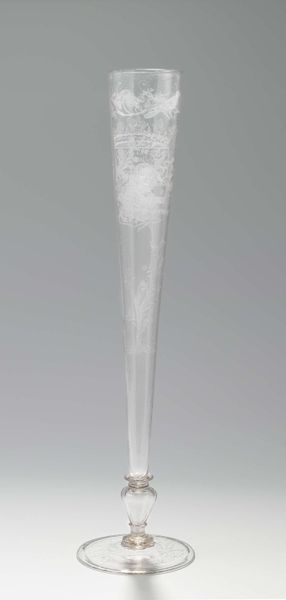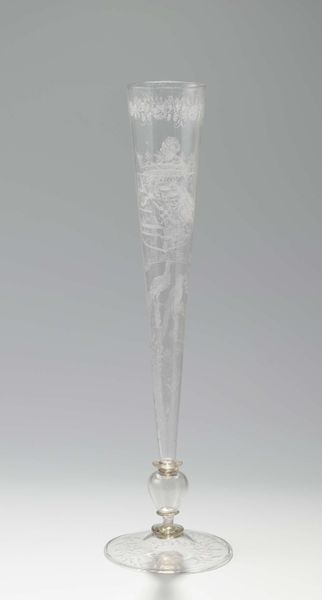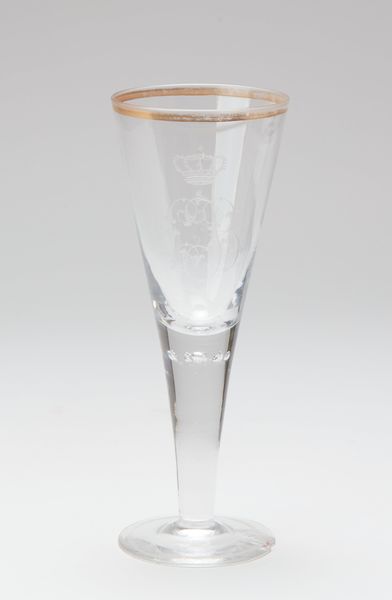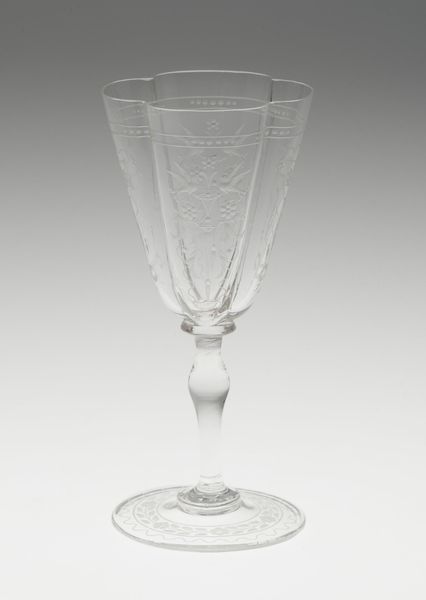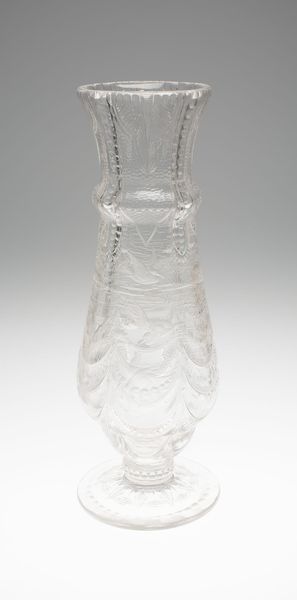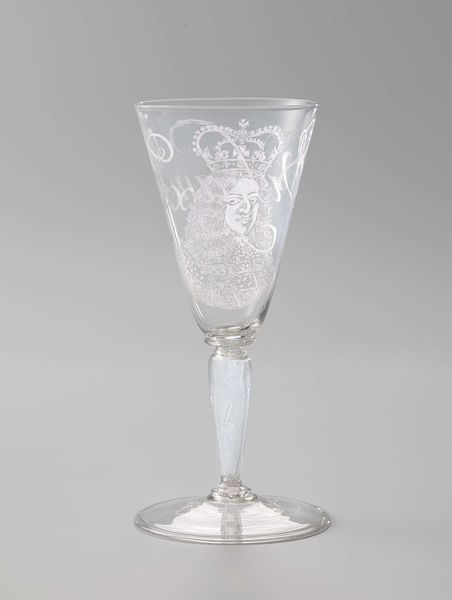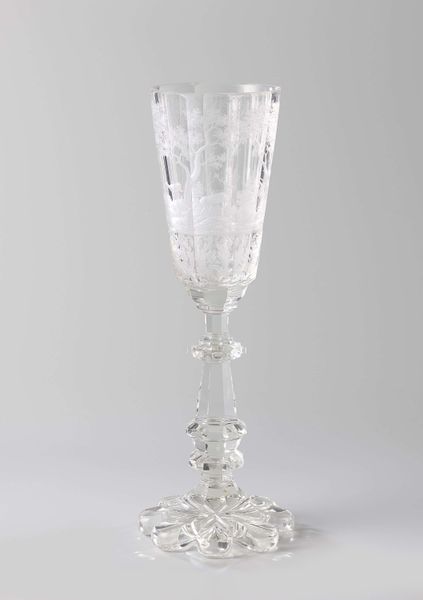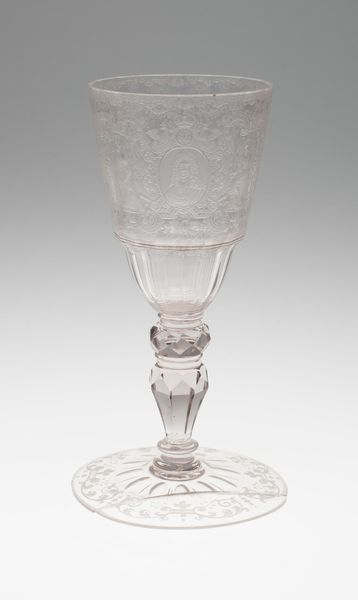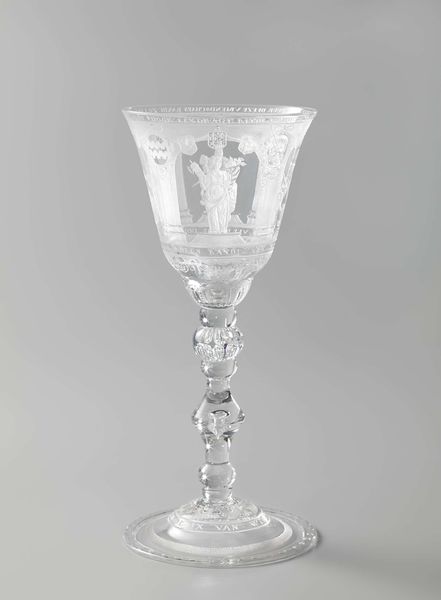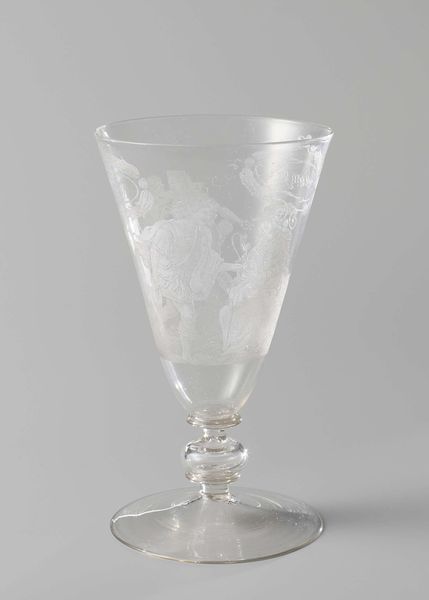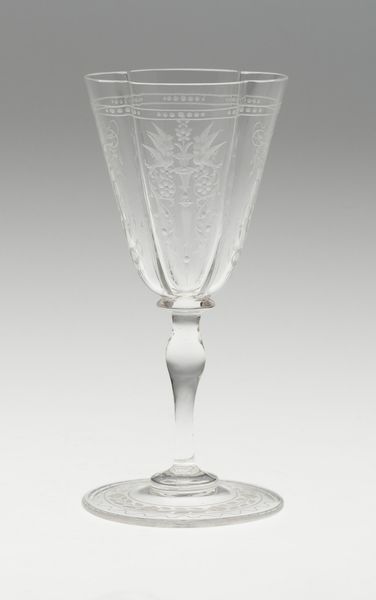
glass
#
baroque
#
glass
#
decorative-art
Dimensions: height 35.5 cm, diameter 6.4 cm, diameter 11.4 cm
Copyright: Rijks Museum: Open Domain
This slender flute glass, etched with vines and grapes, was made by an anonymous artisan. While its exact date is unknown, similar pieces were popular across Europe. This suggests the existence of a robust glassmaking industry that helped to shape cultural practices of its day. Consider for example, the rise of champagne as a celebratory drink in aristocratic circles, often associated with luxury and status. Glassware like this flute was not merely a functional object, but a symbol of social aspiration. The etched vines and grapes allude to Bacchus, the Roman god of wine. In 17th-century Holland, the era of the Dutch Republic, where this glass likely originated, imagery from classical mythology was often deployed to evoke a sense of sophistication and cultural refinement. Historical research reveals much about its place in the social structures of its time. By studying the economic history of glass production and the cultural significance of wine consumption, we gain insight into the relationship between art, commerce, and social identity.
Comments
No comments
Be the first to comment and join the conversation on the ultimate creative platform.

